
Rediscovering Japan

Rediscovering Japan
Travel (Nagasaki Part 4 (Shimabara Peninsula))

by tomizuta
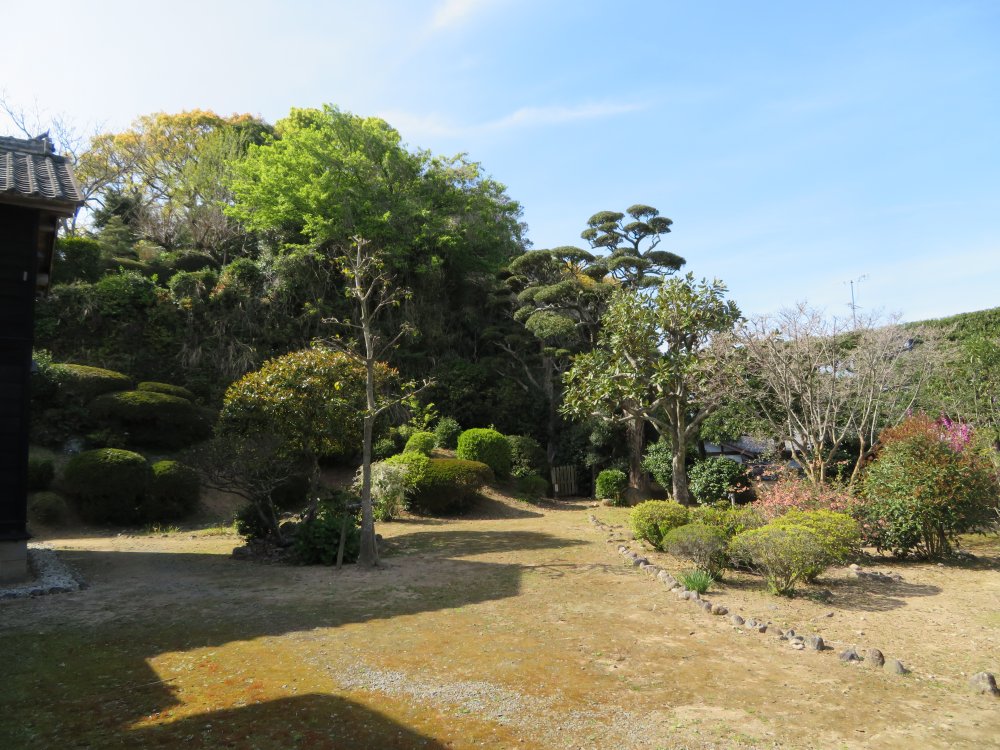
The beautiful garden of the former Koujiro Nabeshima residence in Kunimi Town, Unzen City.
On the third day, we left our hotel in central Nagasaki City at about 9am in the morning to explore Shimabara City. The city center of Shimabara City is located on the eastern coast of Shimabara Peninsula, facing the Ariake Sea. It is more than sixty kilometers from Nagasaki city center and close to a two hours’ drive as more than half the route is a single lane non-motorway. By train from Nagasaki, you need to take the JR to Isahaya, and change there to the Shimabara Railway to get to Shimabara which would take a similar time. If you are going to visit other places on the peninsula such as Hara Castle, it would be much more efficient to drive. We parked at the car park on the grounds of Shimabara Castle, where the parking fee is three hundred yen for one day. Shimabara Castle was originally constructed in 1624 and for most of the Edo era, was the main castle of the Matsudaira Family, until it was demolished in 1876 after the Meiji Restoration. The current castle building is a reinforced concrete keep completed in 1964 and has served as a museum of local history of Christians and the feudal domain of Shimabara in the Edo era. As usual we first visited this museum to get a better understanding of Shimabara.
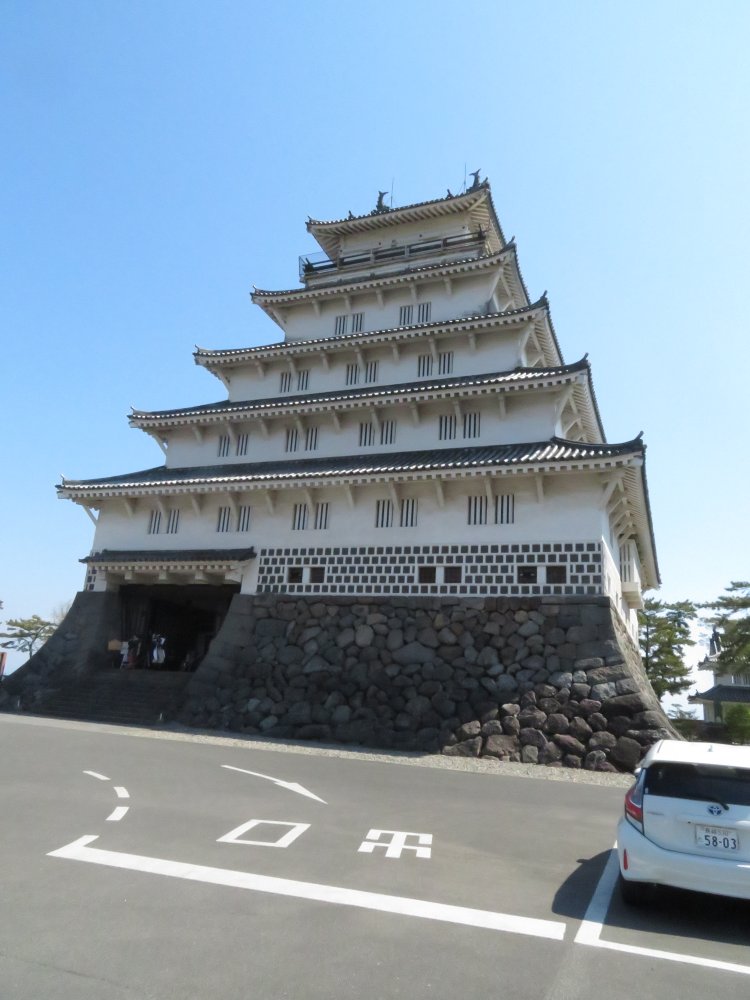
The current castle building is a reinforced concrete keep completed in 1964. There is a car park in front where you can park a whole day at 300yen.
Shimabara is known in Japanese history because of the Shimabara War (or Shimabara/Amakusa War) which took place in 1637 to 1638, early in the Edo era. The feudal lord of Shimabara before the establishment of the Tokugawa shogunate in the early 17th century was Harunobu Arima. Harunobu converted to Christianity and so did many of his followers and commoners. In 1614, his son Naozumi was reassigned to Nobeoka in now, Miyazaki Prefecture and the Matsukura Family was assigned as the new feudal lord. The Matsukura Family imposed a heavy tax on the farmers to fund the construction of Shimabara Castle which took seven years, and also mercilessly persecuted the Christians. There were many former Arima samurais who gave up their samurai status to help the commoners in poverty or had lost their jobs due to the reassignment of the Arimas. In 1637, the samurais and commoners rebelled against the Matsukuras. The rebellion lasted for several months until retreating to Hara Castle on the southern coast of the peninsula and defeated by the Tokugawa shogunate. After the war, the Tokugawa government imposed a complete ban on Christianity and drove all missionaries out of Japan. We learned a lot about the Shimabara War as well as the history of the feudal domain of Shimabara. The admission fee is 540 yen.
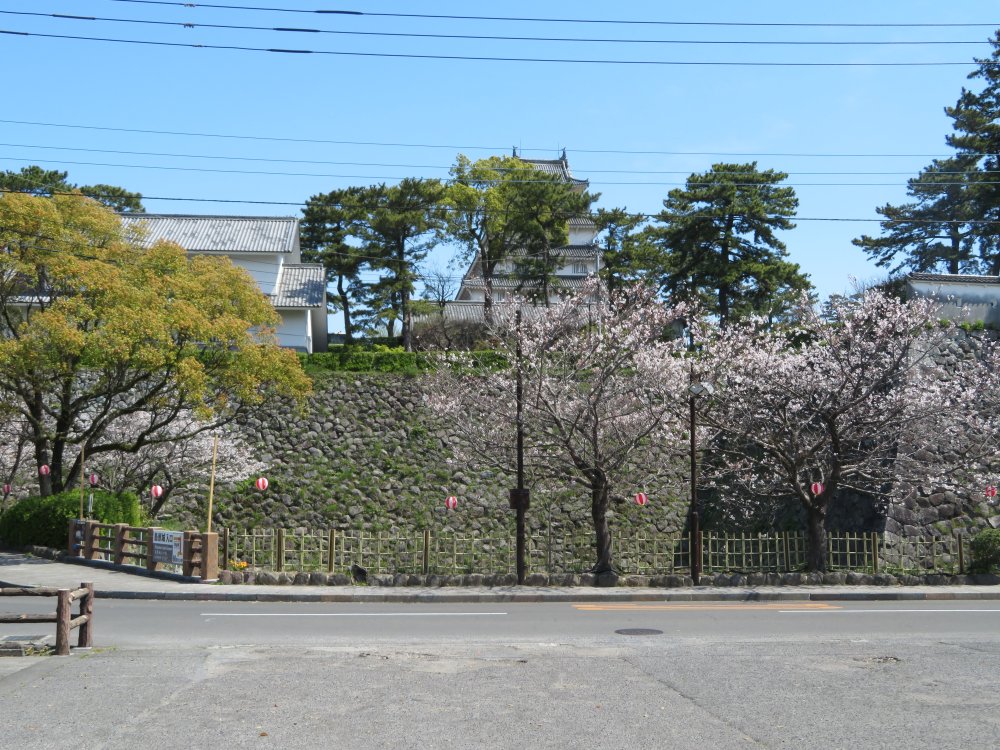
The cherry blossoms along the castle moat was in full bloom when we visited in early April.
We walked about ten minutes to the former samurai residence area. All of the higher ranking samurais’ residences have been lost and only those of the lower ranking samurais remain. The residence area stretches about three hundred meters, and there is a stream in the middle of the lane, which the samurais used for drinking water. It is a pretty and quiet area. Three samurai residences are open to the public for free.
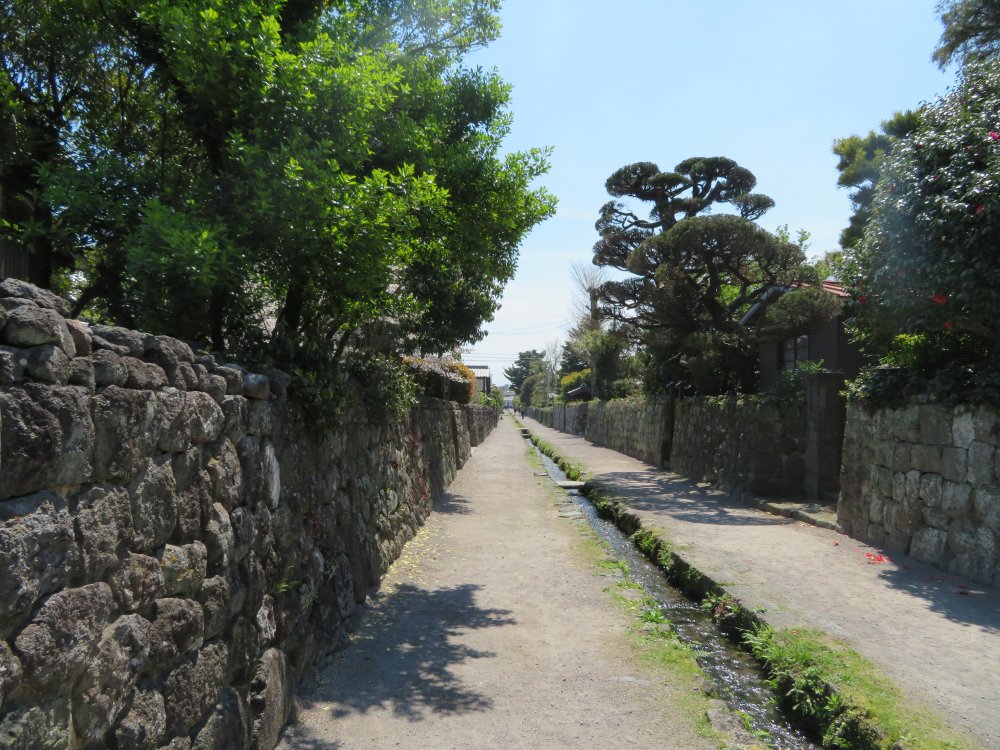
The residence area stretches about three hundred meters, and there is a stream in the middle of the lane, which the samurais used for drinking water.
You can get a good understanding of typical samurai houses by browsing through the house and viewing the gardens. Description in English is also provided. One house belonged to the Shinozuka Family. Judging from the stipend they received and the position they were given as clerks and local administrators, it must have been tough for them if we think of the living style they had to maintain as samurais. Their residence and gardens are quite modest.
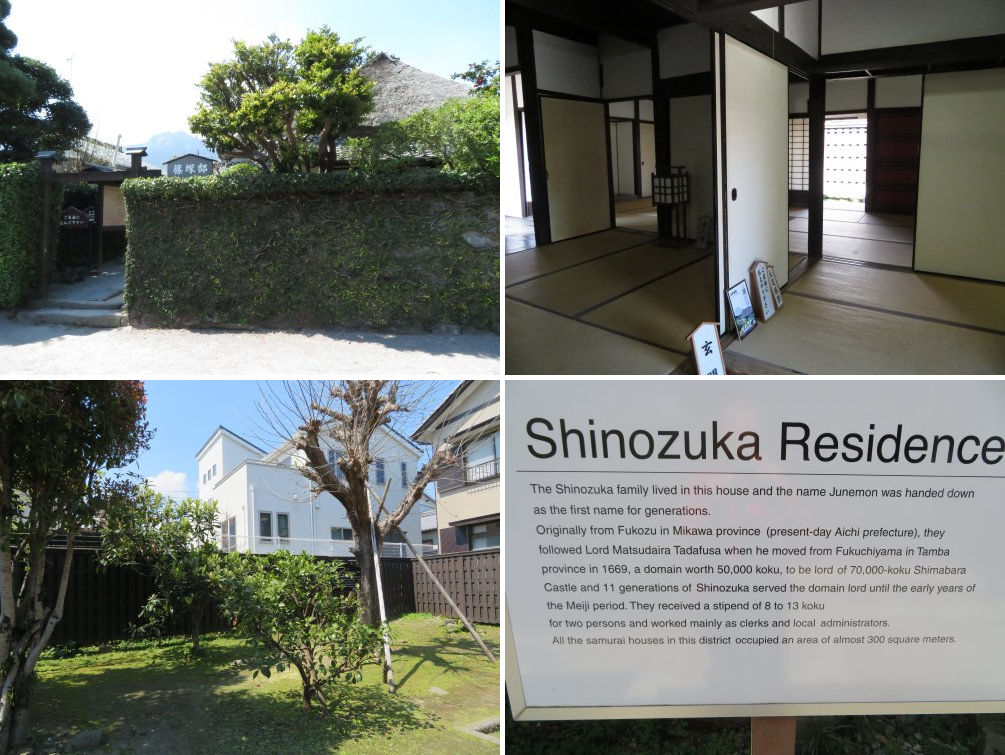
Entrance to the Former Shinozuka residence (top left). The typical samurai residence interior (top right). The modest back garden (bottom left). There was an English description of the residence (bottom right).
Compared with the Shinozuka residence, the living standard of the Yamamoto Family who served as military professor for the Shimabara feudal domain was higher as can be seen from the size and state of their garden.
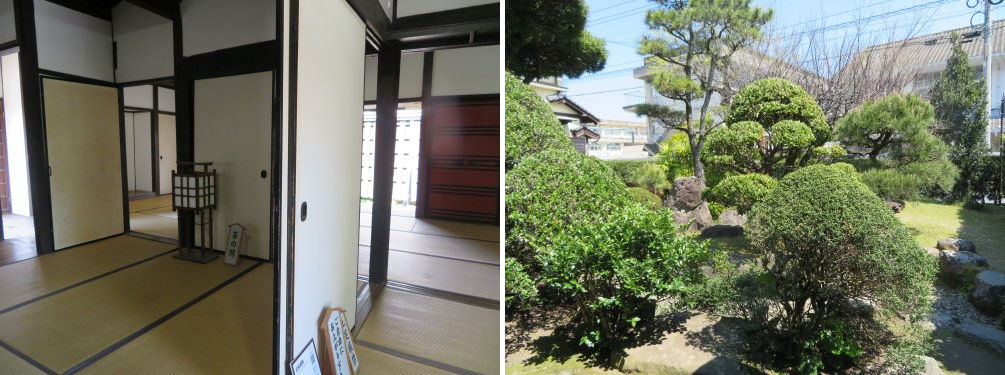
The interior of the Yamamoto Family residence (left) and its back garden (right).
There is a rest area with a gift shop nearby, where I took a rest. I noticed a shrine in the corner of the rest area grounds. The description told me that the shrine is dedicated to the water God. It originated in 1618 during the construction of Shimabara Castle by the Matsukura feudal lord.. The construction was hindered by the many springs in the area for which the clan prayed for help of the water God.
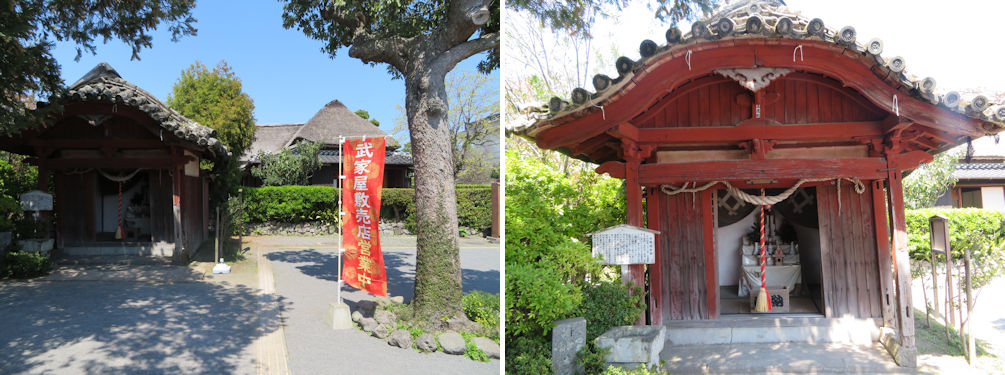
(left) The rest area. The gift shop is behind. (right) The shrine dedicated to the water God. The description says that wood from Shimabara Castle when it was abandonned in the early Meiji era was used.
We then went to see the Shimabara Mizu-yashiki. This is a two story wooden building composed of the Japanese style ground floor from the early Meiji era (1872) and the Western style second floor built about thirty years later. I remembered it being used in some scenes in a TV thriller series almost twenty years and had included it in my visit list. The place was really difficult to find. We finally found the entrance from the shopping arcade. It is now a café specializing in kanzarashi, a local dessert, which is rice balls boiled and then cooled served with syrup. There are many springs in Shimabara, such as one in Mizu-yashiki’s garden, the cold water from which is used for the cooling process. We ordered kanzarashi and coffee and enjoyed it from a tatami seat overlooking the pretty garden.
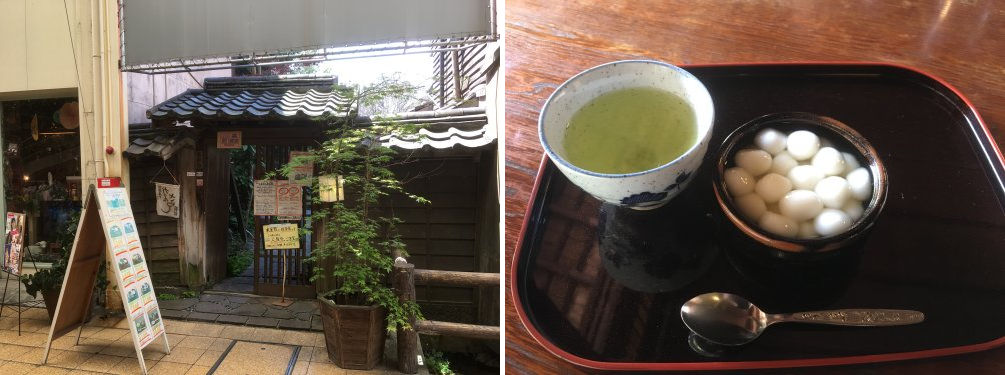
We finally found the entrance from the shopping arcade (left). The kanzarashi dessert (right).
We wanted to enjoy some local seafood for lunch, so we went to a seafood restaurant close to Minamishimabara Station, which is next to Shimabara Station on the Shimabara Railway. The restaurant was converted from a former warehouse of the feudal lord of Shimabara. Their sashimi composed of mostly local fish was fresh and crisp which I enjoyed with taimeshi (steamed rice with sea bream). My wife enjoyed the kaisen-don (bowl of steamed rice with assorted sashimi on top). There aren't that many restaurants on the national road close to Shimabara, so this restaurant was a great find. The total bill was 3,000 yen.
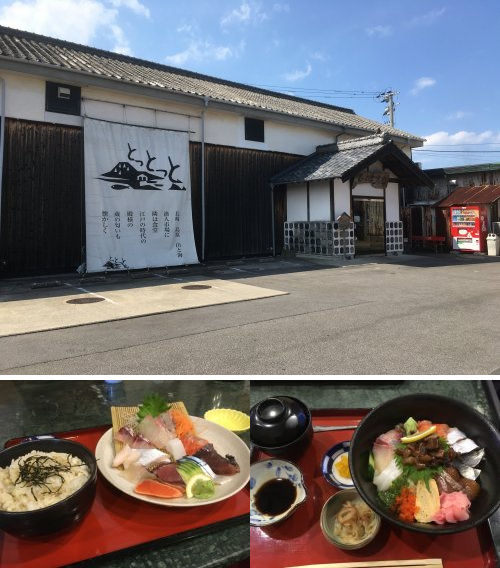
The restaurant was converted from a former warehouse of the feudal lord of Shimabara (upper). Sashimi and taimeshi (lower left) and kaisen-don (lower right).
It was still early in the afternoon, so we decided to travel further south
on the peninsula to the ruins of Hara Castle, which is another component
of the World Heritage designation, “Hidden Christian Sites in the Nagasaki
Region”. We steered from the national road following a signpost to the
castle, and were guided to a car park in an onsen facility nearby. There
was a free shuttle service from the car park to the castle ruins which
runs every thirty minutes. I talked about Hara Castle in my description
of Shimabara Castle above. I will just mention that it was a castle built
at the end of the 15th century by the Arima Family but abandoned in 1616
by their successor, the Matsukuras who built and moved to Shimabara Castle
in 1618. The abandoned castle was where more than thirty thousand Christians
and rebels where besieged and fought to their death for four months against
the Tokugawa organized army of one hundred twenty thousand.
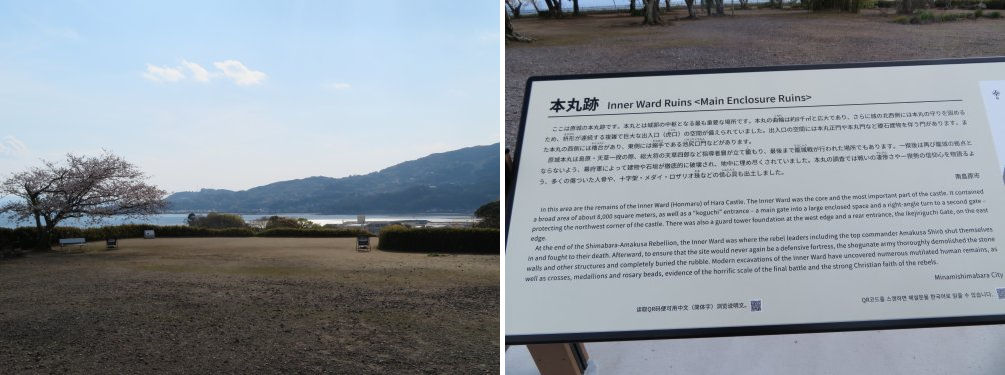
(left) The Honmaru (main castle) area where the rebels fought to their death. The Tokugawa shogunate even asked the Dutch to attack from the Bay in the back. (right) A description of the Honmaru is provided in Japanese and English.
The nomination document for the World Heritage designation tells “Archaeological excavation of Hara Castle has revealed not only the protective gates and stone walls of a tower in the Honmaru, but also countless human bones and devotional tools, including crucifixes made of materials that had been used for bullets by the besieged Christians and medals that their ancestors had received from European missionaries during the period of Catholicism’s introduction and had kept for generations.” We spent about thirty minutes at the site and took the last shuttle back to the car park.
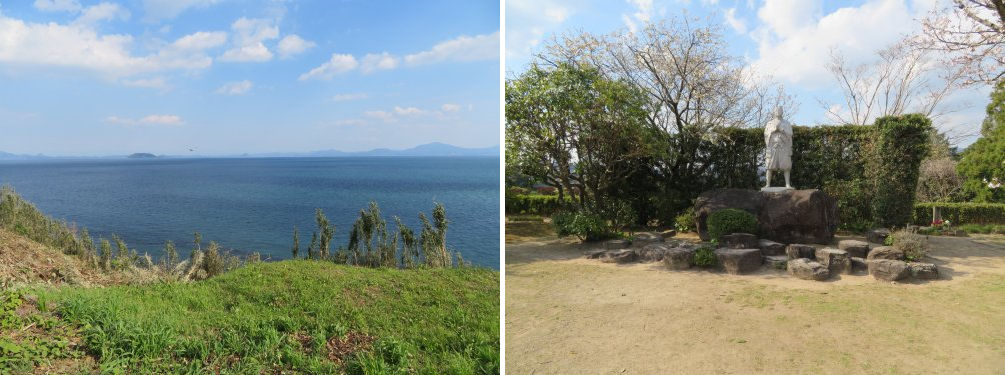
The bay from where the Dutch fired their cannons (left) and the statue of Shirou Amakusa, the young Christian in his teens that was the leader of the rebels (right).
There was one more place I had wanted to visit, Koujiro, part of Kunimi Town in Unzen City, which is located about halfway of our return to Nagasaki City. We took the mountain route instead of the coast route. We got a beautiful view of Mount Heisei-shinzan that was newly created by the eruption of Unzen Mountains in 1990-1996 and is now the highest mountain in Nagasaki Prefecture.
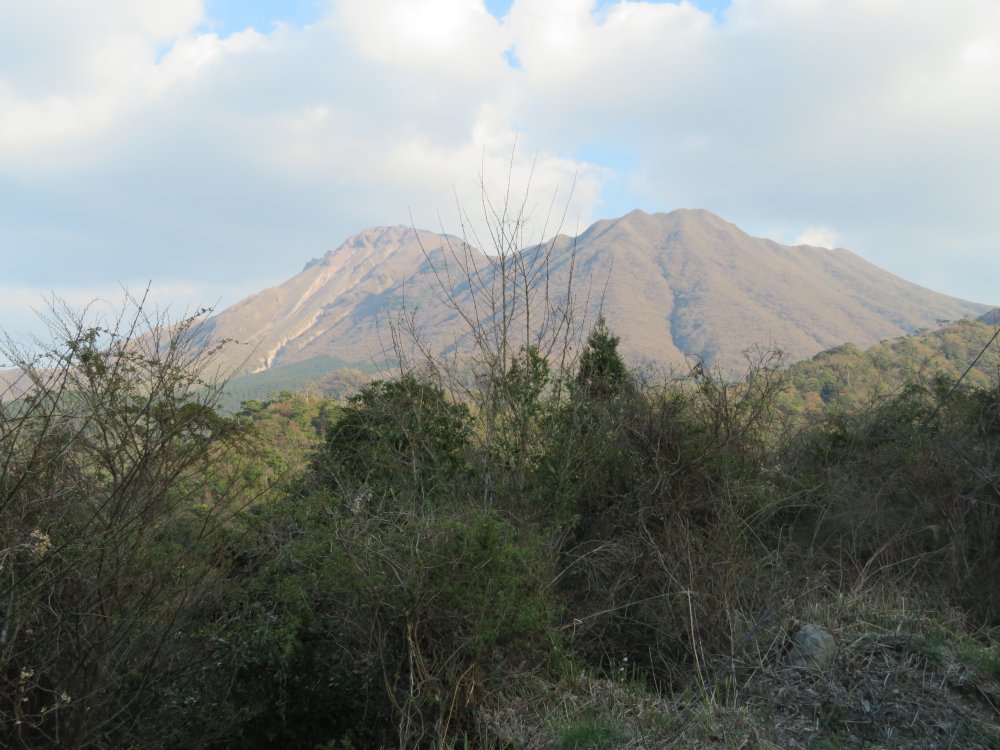
We got a beautiful view of Mount Heisei-shinzan (in the far back) that was newly created by the eruption of Unzen Mountains in 1990-1996 and is now the highest mountain in Nagasaki Prefecture.
Koujiro district is a former samurai residential area relatively newly designated as an Important Preservation District for Groups of Historic Buildings in 2005. The main feature is the former Koujiro Nabeshima residence. Koujiro was an enclave of the Nabeshima feudal domain in Saga, and a relative of the main Nabeshima Family was assigned as the governor. The former Nabeshima residence (now owned by Unzen City) is composed of the main residence built in 1930 on a former governor’s office (honjin). Part of the honjin buildings such as the nagayamon gate (housing the gatekeepers) has also been preserved. We paid the admission fee of 200 yen and went through the many impressive rooms of the house. The rock and water gardens (I believe converted from a promenade garden) in the back of the house was beautifully maintained.
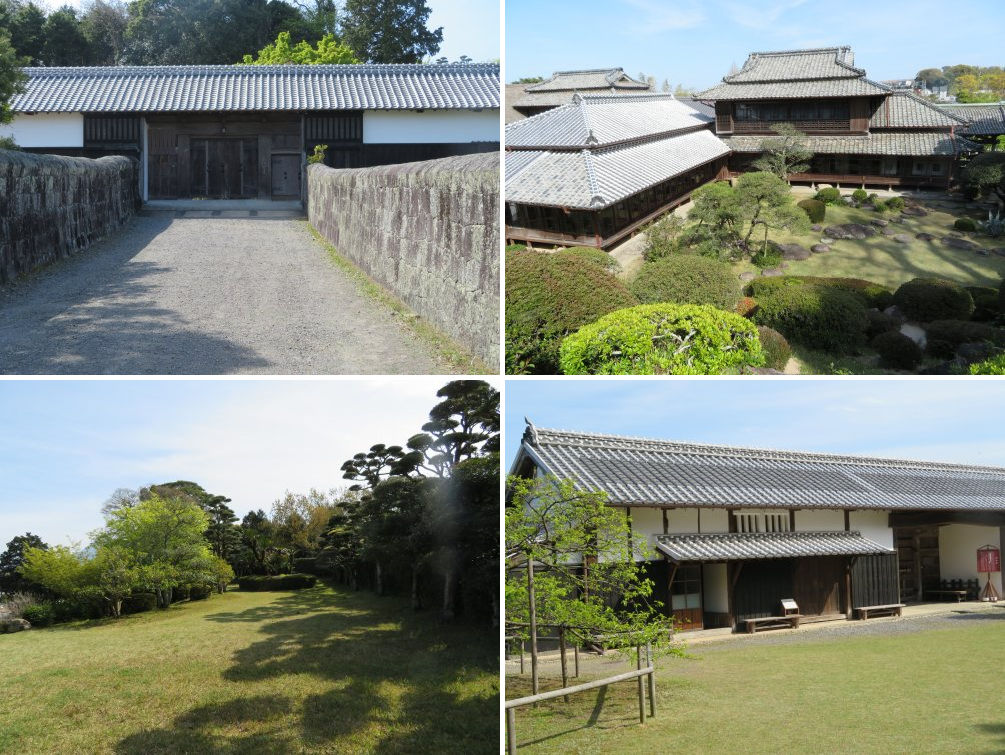
The Nabeshima residence. The entrance gate (upper left), overview of the residence and garden (upper right), the upper garden leading to Koujiro Castle ruins on the right (lower left) and the Nagayamon Gate (lower right).
The row of former samurai residences from the later Edo period with their well-maintained hedging is also a picturesque sight. There is a local history museum by the car park which you can enter for free. The displays are mainly archaeological finds from the excavation of the area, which also told us that people had dwelled here from ancient times.
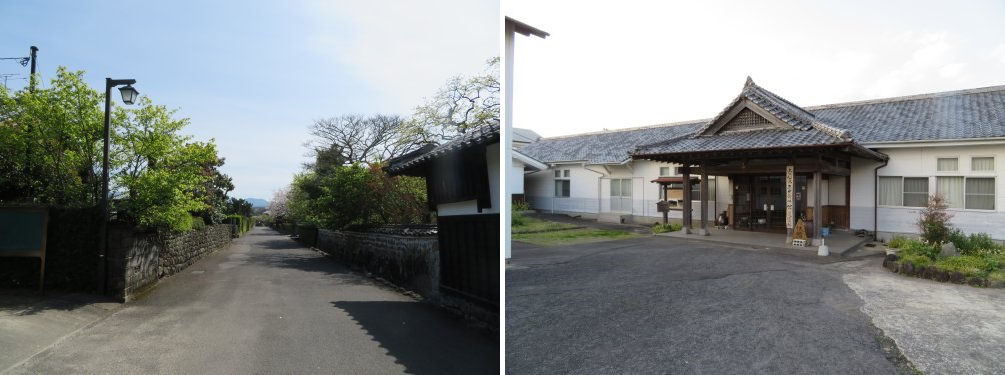
The row of former samurai residences from the later Edo period with their well-maintained hedging (left) and the local history museum (right).